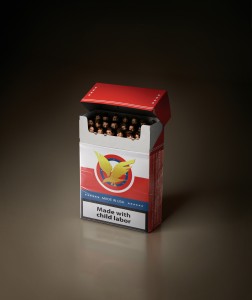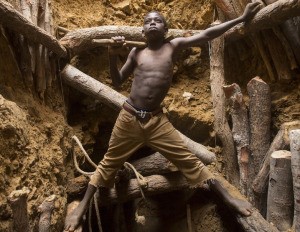CHILD LABOR COALITION PRESS RELEASE: 50 Groups Urge President Obama to Take Action to Protect Child Tobacco Workers in the US
(Washington, DC) Fifty US-based organizations called on President Obama to protect children in US tobacco farming in a letter released today. The letter, issued by the Child Labor Coalition (CLC) and 15 other groups, expressed alarm that children are risking acute nicotine poisoning, pesticide poisoning, and other health and safety hazards in US tobacco fields and asked the president to take a narrowly-tailored regulatory action to protect child workers who are allowed by current labor law to work in tobacco fields at the age of 12.
The letter, signed by organizations, representing millions of teachers, healthcare professionals, workers, farmworkers, and advocates concerned about the safety, education, and welfare of children, also asks the president to call on the Department of Labor to conduct targeted field investigations to ensure that no children under 12 are working in the fields illegally.
A recent report, “Tobacco’s Hidden Children: Hazardous Child Labor in United States Tobacco Farming,” by Human Rights Watch found that of 141 child tobacco workers interviewed in North Carolina, Kentucky, Virginia and Tennessee, three-quarters reported getting sick while working on US tobacco farms. Many of their symptoms—nausea, vomiting, loss of appetite, headaches, and dizziness—are consistent with acute nicotine poisoning (also known as “Green Tobacco Sickness”).
“Children in the US can’t legally buy cigarettes, but children working in tobacco fields are suffering acute nicotine poisoning,” said Sally Greenberg, co-chair of the Child Labor Coalition (CLC) and executive director of the National Consumers League. “We urge the president to take immediate action to protect America’s most vulnerable workers—children in tobacco fields.”
“Child tobacco workers reported working long hours, often in extreme heat and without protective gear,” noted Dr. Lorretta Johnson, co-chair of the CLC and the secretary-treasurer of the American Federation of Teachers. “Unfortunately, child labor is a common practice in the United States, and it’s legal. We stand with Human Rights Watch, the CLC and many others to call attention to the great dangers faced by children working on tobacco farms. We urge the administration to take measures to end hazardous child labor in tobacco farming.”
Under US law, children as young as 12 can work for hire on any farm with their parent’s permission. Even younger children can work on small farms.
“Agriculture is already the most dangerous area of employment open to children in the US,” said Norma Flores López, the director of the Children in the Fields Campaign for the Association of Farmworker Opportunity Programs and the chair of the CLC’s domestic issues committee. “Tobacco farming is particularly hazardous because of nicotine exposure and toxic pesticides. We worry about children developing cancer—and neurological and reproductive health problems—linked to the exposure of toxic pesticides. We also need to prevent injuries from working with machinery and dangerous tools, lifting heavy loads, and climbing to significant heights in curing barns.”
The letter to the president also calls on the Occupational Safety and Health Administration to issue “health hazard alerts” so that employers will know how they might mitigate risks of nicotine poisoning for their employees. And it cites the need for better data collection to allow an accurate count of the number of children who currently work in US tobacco fields and other farms.
In June, the CLC sent a letter to the top 10 tobacco companies signed by over 50 organizations, asking for voluntary action to limit tobacco work in the fields. Thus far, no concrete actions to remove children from tobacco fields have been initiated by the companies.
In 2011, the Obama Administration acted to implement regulations to protect working children from farm dangers, including tobacco work, but those rules were withdrawn because of opposition from the farm community. “The wholesale withdrawal of occupational child safety regulations for farms left child workers in tobacco vulnerable to nicotine poisoning, pesticide poisoning, and other dangers. It’s time to fix this glaring consequence of the administration’s complete pullback and move forward to protect children in tobacco fields,” said Reid Maki, CLC coordinator.
Today’s letter to the president with a full list of signers can be found here.
For immediate release: August 28, 2014
Contact: Norma Flores Lopez, (202) 828-6006×106, flores@afop.org or Reid Maki, (202) 207-2820






